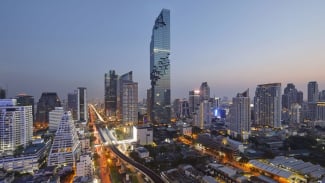Researchers Reveal Cosmic Storm Phenomenon through Tree Structure
- NOAA
VIVA – Recently, researchers have revealed the phenomenon of cosmic storms that strike the earth once every one million years through tree structures. In particular, when radiation hits Earth's atmosphere, it can convert any nitrogen atom it hits to produce a form of carbon, which in turn is absorbed by plants.
Linking spikes in this carbon isotope with the growth rings in trees can give us a reliable record of radiation storms going back thousands of years.
According to the record, it shows us about the most colossal of these events, known as Miyake occurs around once every thousand years. However, we still do not know about the causes, as quoted from Sciencealert, on Thursday 27, 2022.
"We need to know more because if one of these happened today, it would destroy technology including satellites, internet cables, long-distance power lines, and transformers,” astrophysicist, Benjamin Pope of the University of Queensland in Australia said.
The history of Earth's encounters with storms of cosmic radiation is there to decipher if you know how to look. The main clue is a radioactive isotope of carbon called carbon-14, often referred to as radiocarbon.
Compared to other naturally occurring isotopes of carbon on Earth, radiocarbon is relatively scarce. It forms only in the upper atmosphere, when cosmic rays collide with nitrogen atoms, triggering a nuclear reaction that creates radiocarbon.
Badai Roslyn.
- NOAA
Because cosmic rays are constantly colliding with our atmosphere, we have a constant but very small supply of the stuff raining down on the surface.
Some of it gets caught up in tree rings. Since trees add a new growth ring every year, the radiocarbon deposition can be traced back through time, giving a record of radiation activity over tens of millennia.
A large spike in radiocarbon found in trees around the world means an uptick in cosmic radiation. Several mechanisms can cause this, and solar flares are a big one. But there are some other possible sources of radiation storms that haven't been conclusively ruled out. Nor have solar flares been conclusively ruled in.
Because interpreting tree ring data necessitates a comprehensive understanding of the global carbon cycle, a team of researchers led by mathematician, Qingyuan Zhang of the University of Queensland set about reconstructing the global carbon cycle, based on every scrap of tree ring radiocarbon data they could get their hands on.
"When radiation strikes the atmosphere, it produces radioactive carbon-14, which filters the air, oceans, plants, and animals, and produces a record annual radiation in tree rings," Qingyuan Zhang explained.
"We modeled the global carbon cycle to reconstruct processes over 10,000 years, to gain insight into the scale and nature of the Miyake event," he said.
The results of this modeling gave the team an extremely detailed picture of some radiation events enough to conclude that the timing and profile are inconsistent with solar flares. The spikes in radiocarbon do not correlate with sunspot activity, which is linked with flare activity. Some spikes persisted across multiple years.
Researchers don't know, at this point, what might have caused the explosion, but there are several candidates. One of them is a supernova event, radiation that can explode across space.
A supernova may have occurred in AD 774, and scientists have made connections between radiocarbon spikes and other possible supernova events, but we do know of supernovae without radiocarbon spikes without associated supernovae.
And this, according to the researchers, is a worry. The human world has changed dramatically since 774 CE; a Miyake event now could cause what the scientists call an "internet apocalypse" as infrastructure gets damaged, harm the health of air travelers, and even deplete the ozone layer.


























